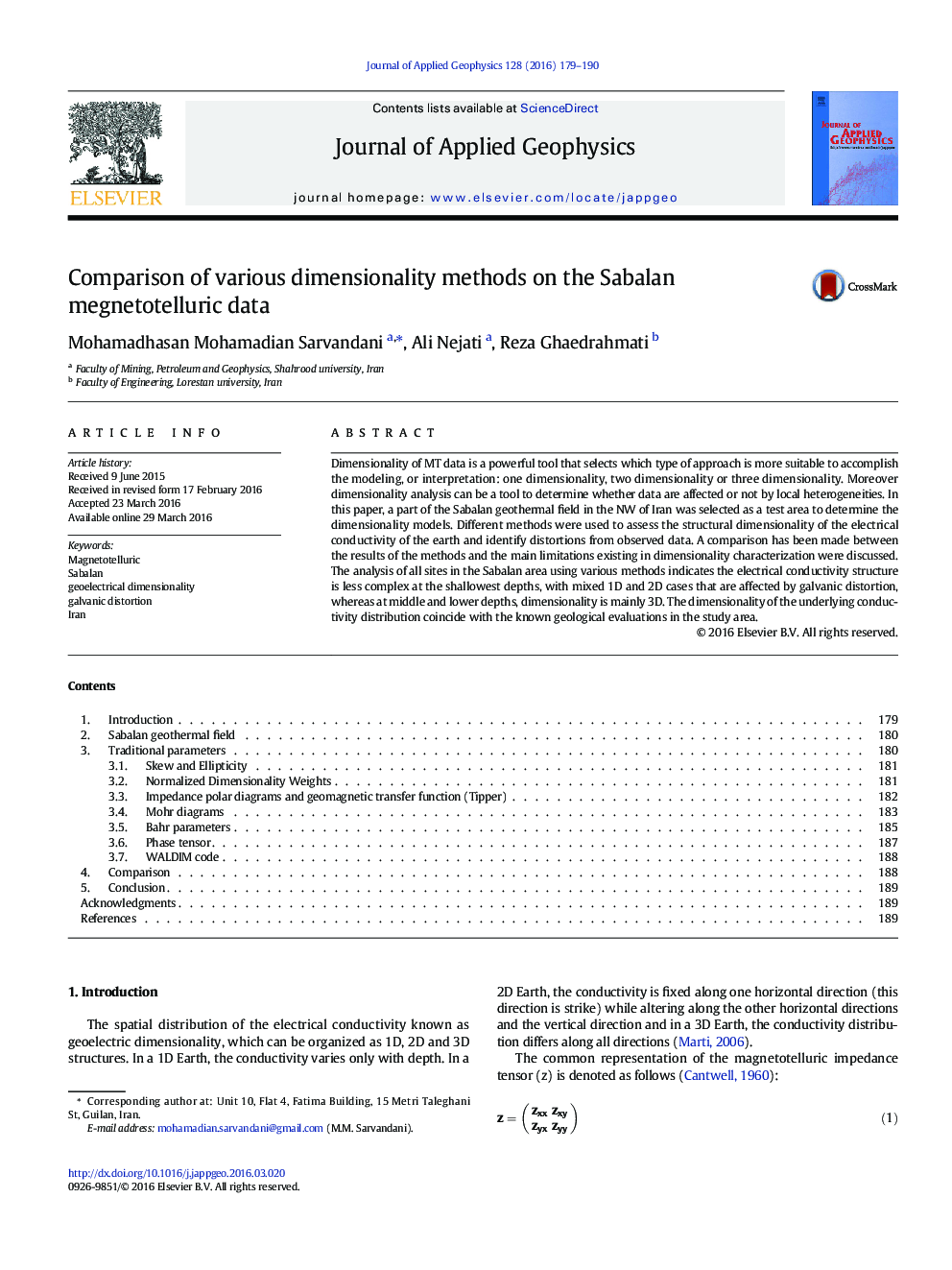| Article ID | Journal | Published Year | Pages | File Type |
|---|---|---|---|---|
| 4739797 | Journal of Applied Geophysics | 2016 | 12 Pages |
•We explained the concept of dimensionality in the magnetotelluric method.•We studied the part of the Sabalan geothermal field in Iran to determine the dimensionality models.•We used different methods to assess the structural dimensionality of the resistivity of the Earth and identify distortions from magnetotelluric data.•We compared the results of different methods and we discussed the problems associated with methods.•We suggested that the WALDIM method can be more informative than any other dimensionality methods.
Dimensionality of MT data is a powerful tool that selects which type of approach is more suitable to accomplish the modeling, or interpretation: one dimensionality, two dimensionality or three dimensionality. Moreover dimensionality analysis can be a tool to determine whether data are affected or not by local heterogeneities. In this paper, a part of the Sabalan geothermal field in the NW of Iran was selected as a test area to determine the dimensionality models. Different methods were used to assess the structural dimensionality of the electrical conductivity of the earth and identify distortions from observed data. A comparison has been made between the results of the methods and the main limitations existing in dimensionality characterization were discussed. The analysis of all sites in the Sabalan area using various methods indicates the electrical conductivity structure is less complex at the shallowest depths, with mixed 1D and 2D cases that are affected by galvanic distortion, whereas at middle and lower depths, dimensionality is mainly 3D. The dimensionality of the underlying conductivity distribution coincide with the known geological evaluations in the study area.
Graphical AbstractFigure optionsDownload full-size imageDownload as PowerPoint slide
